Spotted lanternflies are small but striking insects. Adults measure about one inch in length. They have two sets of wings. The forewings are typically brown with black spots and the characteristic hindwings are red with black spots and black and white striping. Their abdomen is yellow with black stripes.
Spotted Lanternflies
The spotted lanternfly is an invasive species that originated in eastern Asia and entered the United States in 2014. They were first sighted in Pennsylvania and have since spread to 17 states along the eastern U.S., including New York.
Swarms of these pests are very destructive to trees, plants, and crops – and they can take over very fast. Spotted lanternfly pest control is most effective if you take action quickly, which is why the pros at Assured Environments are here to help. Read on to learn more about how to identify an infestation and how our team can help you deal with it.
Appearance
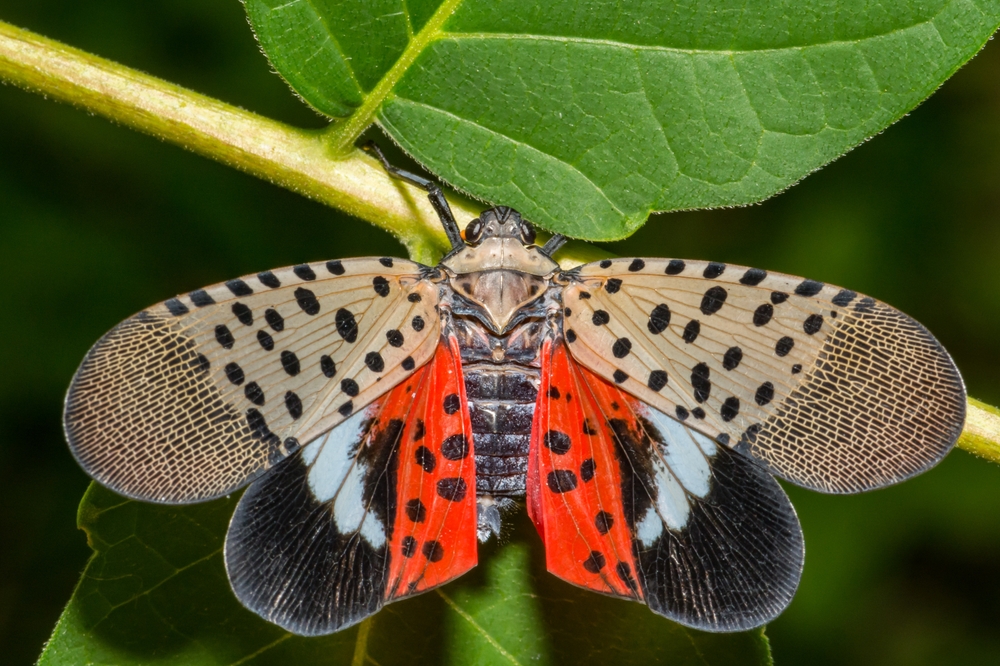
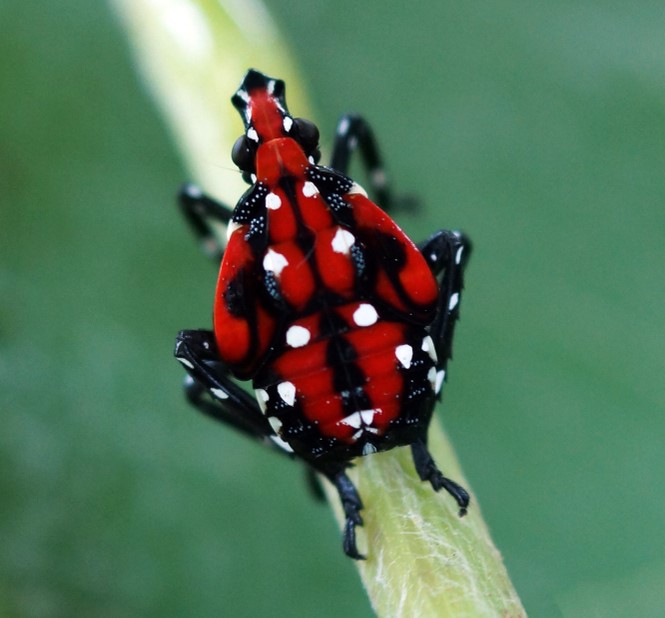
Spotted lanternfly nymphs start out black and white and gain their red coloring and wings as they mature. They go through four instar stages before reaching adulthood.
Because these insects tend to feed in large groups, it’s easy to notice them.
Signs of Infestation
The most significant signs of a spotted lanternfly infestation are egg masses and the oozing sap they leave behind.
- Egg masses appear as a gray smear when newly laid and will harden into what looks like cracked, brown mud. You can find egg masses on trees, rocks, walls, fences and even vehicles or equipment.
- Oozing sap is an excretion left behind by lanternflies after they eat. This sweet and sticky substance is often referred to as “honeydew” and can attract other insects such as ants, wasps and bees, compounding your pest problem. Left untreated, oozing sap can lead to the growth of a destructive sooty mold and a rotten odor.
According to the U.S. Fish and Wildlife Service, lantern flies are spreading quickly and prevention requires constant vigilance. If you see these signs of lanternflies, it’s important to report your findings and destroy any existing insects and eggs you find. A pest control professional like Assured Environments can help.
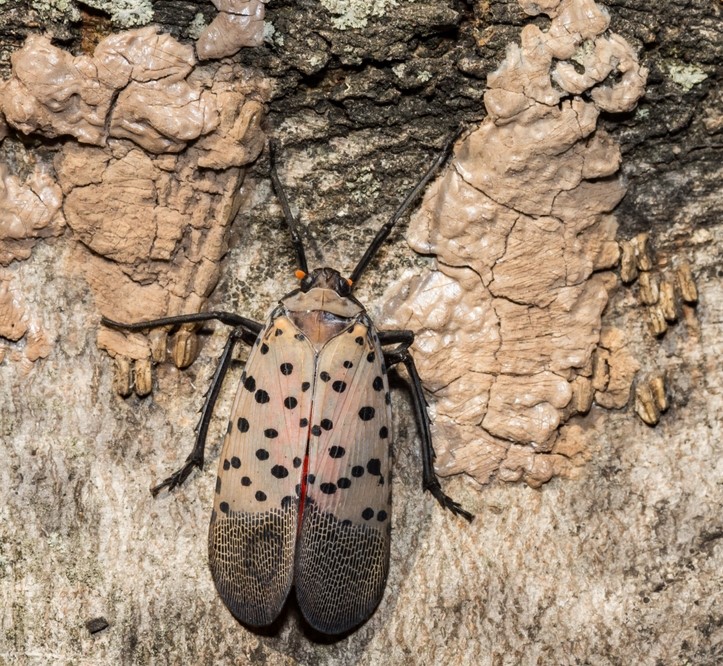
Life Cycle and Behavior
A female adult spotted lanternfly lays her eggs in the fall, before the first frost. Each egg mass contains between 30-50 eggs. It’s believed that overwintering improves the hatch rate for the eggs but that extremely cold temperatures (-13F or less) will kill them.
The nymphs begin to hatch in the spring and are common from April to July. During this period, they molt four times, changing their color and appearance with each interval. Nymphs begin black and white and develop their reddish color and their wings as the life cycle progresses.
Nymphs develop into adults throughout summer. Once in adult form, they engage in large migrations and extensive mating rituals that can last for hours. After mating, females will seek a host location for her eggs. This is ideally a tree of life or similar tree. The adult population dies out with the onset of freezing temperatures.
Food
Nymphs and adults feed on sap from a variety of flora including grape vines, soybeans and stone fruits, but their preferred food source is the tree of heaven which, according to Penn State University, is also an invasive species. The sharp mouthparts they use to eat can cause piercing wounds in plants and lead to significant crop damage.
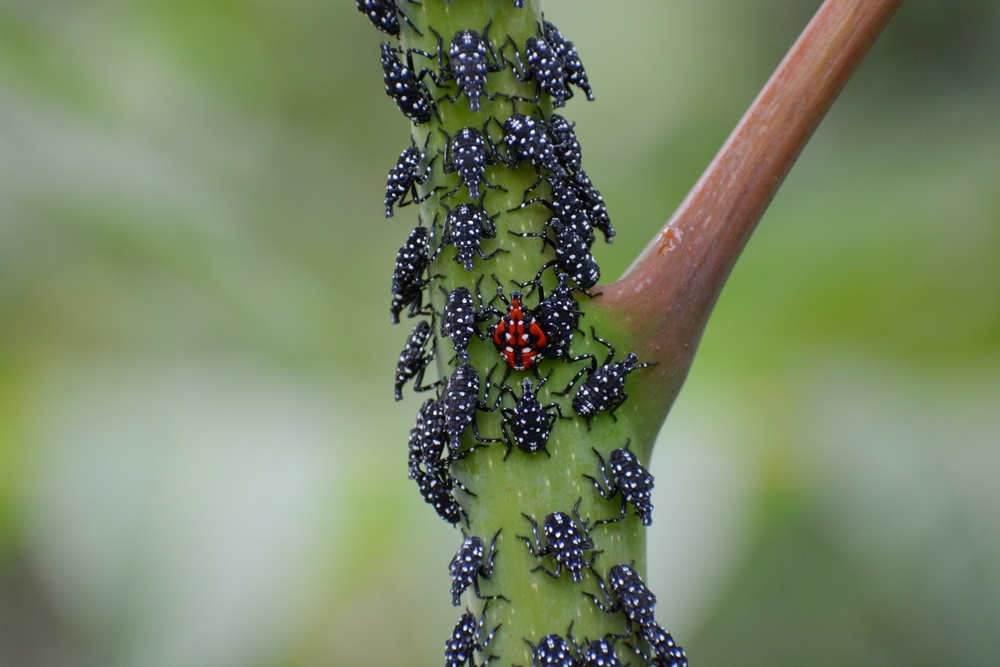
Control and Prevention
The easiest way to control the population is by identifying and destroying spotted lanternfly eggs. The recommended approach is to scrape them off their host surface, double bag them and throw them in the garbage.
Other strategies include removing tree of heaven trees from your property or setting up spotted lanternfly traps on them.
As of 2020, several pesticide treatments have been approved for spotted lanternfly control. A pest control provider like Assured Environments can perform “knockdown services” for commercial buildings to reduce lanternflies on your property.
In its native habitats, lanternfly populations are controlled by certain varieties of wasps. Several species of wasp are being tested to see if these natural spotted lanternfly predators could be used for control in the United States.
Links to More Resources
United States Department of Agriculture
New York State Department of Environmental Conservation
New Jersey Department of Agriculture
Who to Call for Spotted Lanternflies in NYC
It’s important to control and reduce spotted lanternfly populations. If you notice this invasive pest on your property, call the experts at Assured Environments. Our entomologists will devise the best means of eliminating this pest so that they don’t increase their numbers or become a nuisance.
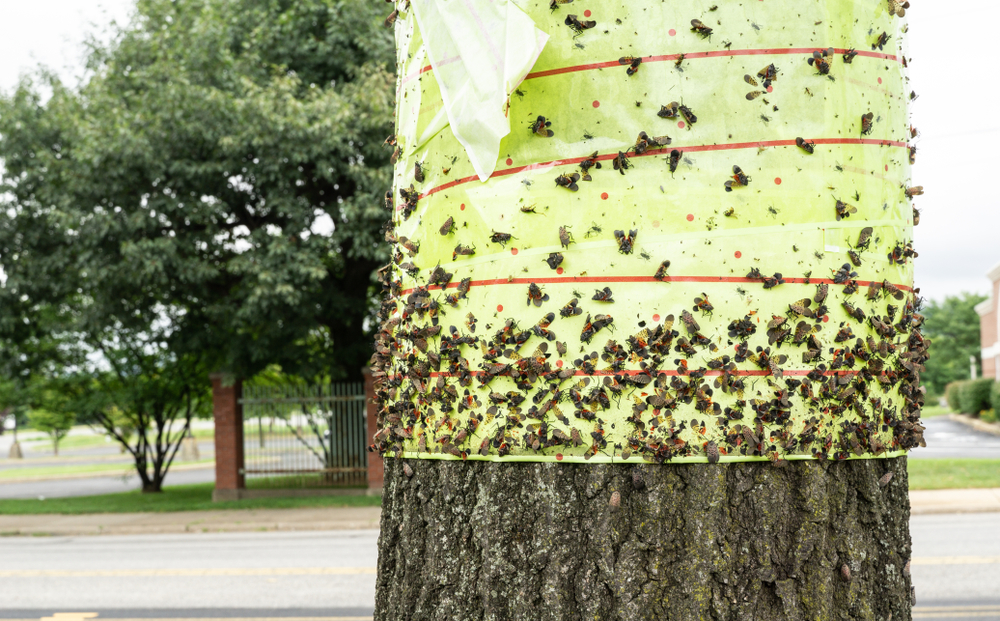
They are an invasive species without natural predators in the U.S. Because spotted lanternflies feed in large groups and can damage trees, plants and crops as well as leave behind mold, they are considered a nuisance.
They are not directly dangerous to humans–they don’t bite or sting–but they can damage flora, swarm in large groups and leave behind a nasty smelling ooze.
Lanternflies use long, piercing mouthparts to suck sap out of trees and plants.
In their native, Asian habitats, several types of wasps prey upon spotted lanternflies.
Spotted lanternflies are natives of eastern Asia, specifically China, Vietnam and Taiwan. It is believed that they entered the United States through egg masses attached to a stone shipment from China.

